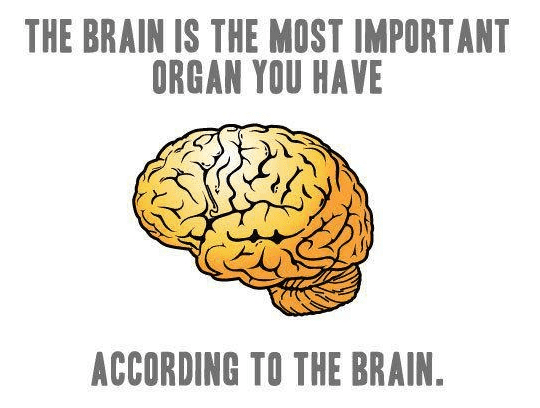We all love a good joke but let’s face it, some are better than others at making people laugh. Cracking jokes is definitely a creative process and scientists at the University of Southern California (USC) in Los Angeles sought to unravel what goes on inside the brain of amateur and professional comedians alike. Their findings suggest two key brain regions are activated when engaging in humor. One of these regions is heavily involved in understanding speech and imagery, suggesting a connection with other creative processes like painting or music.

The research team was led by Ori Amir, and Irving Biederman, a professor of psychology and computer science. They first recruited amateur and professionals comedians then asked them to fill in the blanks in some captionless New York cartoons. Each participant was asked to create two versions: one mundane while the other was supposed to be humorous. Meanwhile, fMRI machines scanned their brains.
[ALSO SEE] What makes a good joke, according to science
Scans showed that two brain regions in particular were heavily involved when the participants wrote their jokes — the medial prefrontal cortex (mPFC) and the temporal association cortex (TSC). Previously, researchers identified the mPFC as involved with the retrieval and consolidation of remote long-term memory. It also helps us respond to social situations. TSC’s role also has something to do with memory, but the region is also involved in recognizing complex stimuli and patterns, like human faces or speech.

Brain activity differed from person to person, depending on how comically skilled each participant was. The more experienced comedians showed more heightened activity in the temporal lobe while the non-comedians saw less activity in the temporal lobe and more activity in the prefrontal cortex, as reported in Frontiers in Neuroscience. This makes sense because the temporal lobe is known to process semantic and abstract information while the prefrontal cortex is important for top-down decision making. If you’ve ever been to an improv comedy show, for instance, then you know the best gags are spontaneous.
“The more experience you have doing comedy, the less you need to engage in the top-down control, and the more you rely on your spontaneous associations,” Amir said.
Neuroscientists have always been fascinated by creativity and how it stems from the brain. Studying musicians, painters or other members of the creative arts can be a bit daunting, however. Luckily, humor is far more structured which offers a great opportunity.
“Humor is an outstanding testbed for studying creativity,” Biederman said. “It has a clear beginning, middle and end with a duration brief enough for neuroimaging. Also, the end product is easy to evaluate: Does it make you laugh? When someone creates an original composition or a poem, assessing the quality is not as clear cut.”
The same temporal lobe regions that show high activation from humor are also activated by the aesthetic experience of studying a masterpiece painting or gazing at a beautiful vista, previous research conducted by Biederman showed. What may underlie both humor and aesthetics, Biederman says, are cortical regions responsible for visual processing which have a high density of opioid activity — you know the stuff found in heroin and painkillers. A good song or a good joke gives us pleasure, in other words.
There’s a caveat, though. Each activation, and hence pleasure, is reduced by the repetition of the experience. A joke might be funny as hell the first time you hear it but tends to fade after you hear your friends regurgitate it over and over again. This makes us ‘infovores’, as Biederman puts it, meaning we’re hard-wired to seek new information and experiences because the old ones just don’t cut it anymore.


